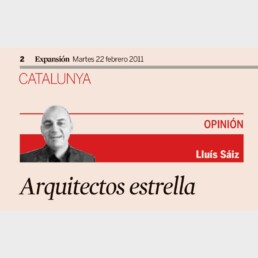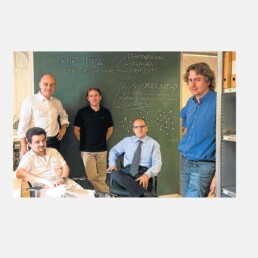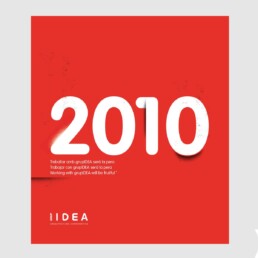Idea PikaPika V “The bank as a shop” by Carlos Casanovas.
In GRUP IDEA we understand the Bank as store and Carlos Casanovas spokes about that, marketing director of "la Caixa" November 24, 2011 in the Central Headquarters of GRUP IDEA Barcelona.
The image of “La Caixa” branches must be coherent with the whole marketing strategy pursued by the company. It has over 5,000 branches and the size of the organisation makes this an important but complex goal. Branches must communicate in order to sell more; it is a matter of generating business opportunities, and for this reason the items they sell must be simple and easy to understand. Channels for communication with clients are changing, in particular due to the role of the Internet. This is why the branch must provide services with greater added value. Frontages are now seen as advertising hoardings. Much of the text has been done away with, to be replaced by clear, high-impact graphics. Joint campaigns are run, organising between 400 and 500 different types of media. The whole implementation is coordinated by computer. The branch sign is what identifies the organisation; the logo never appears on the vinyls stuck on the windows as this would be too repetitive. Their role in advertising campaigns is standardised for all offices, except in those classed as “emblematic”. In all there are 22 of these, in which the investment is higher and individualised. Read more
Idea PikaPika IV “Can design help the economy?” by Ramón Aymerich.
Ramón Aymerich, head of economy of "La Vanguardia", of September 29, 2011, gave answer to the question: "can design help the economy?" in the Central Headquarters of GRUP IDEA Barcelona.
There are three ways of understanding design. On the one hand there are the firms that create design (for example Santa Cole, Escofet, Marset and so on). In themselves they do not bring about particularly important changes. They fit into a tradition in Catalonia which goes back to Modernisme, the Catalan branch of Art Nouveau. On the other hand there are clients. Normally large companies make better use of design. In general, and above all in Spain, companies find it hard to make a link between design and their profits. This is probably because designers do not explain themselves much. In the last three years and up to now, companies have gained in market share abroad, though now it is going down again. It has been almost like a miracle. Analysis of the examples available reveals that most of them have not used design as a driving force. Business people have difficulty in understanding it, probably because of an attitude problem. They see the Italians selling more thanks to design, but they cannot change their own way of thinking. Read more
Idea PikaPika III “Trends in the age of friction” by Daniel Córdoba Mendiola.
On June 30, 2011, Daniel Córoba-Mendiola, founder and director of THE HUNTER, spokes of trends at the time of friction.
The firm The Hunter is dedicated to researching trends for clients of all kinds, especially fashion companies. It is a think tank in which up to fifteen professionals from different companies and fields can take part. Currently, at a time when we are seeing many changes, it is very useful to conduct studies of this kind in order to gain a better understanding of what is happening. Lifestyles are being questioned in all contexts and all aesthetic trends are a reflection of this.
We have gone from a banal, neo-baroque phase, represented by Lady Gaga, to neo-romanticism. From nostalgia for the past to melancholy.
In 2008, when Lehman Brothers collapsed and nobody knew what was going to happen, there was an auction at Sotheby’s of works by Damian Hirst, who was selling them directly, skipping all intermediaries. In two days he made 350 million euros. The type of art which does not lose its value is that which is related to the market. Converse asked the same artist to produce a limited edition of his famous butterfly pictures. He did so, in an edition limited to the printer run. Other examples are Takashi Murakami, who rests his discourse on the importance attached to the art world by the market, and Jeff Koons, known for his marriage to Cicciolina and who always works with the imaginary world of the yuppies of the 80’s.Read more
Idea PikaPika II “Draw on yourself and on your environment, but draw” by Pere Monràs.
Below we summarize the main ideas of the day "PIKAPIKA: Pika of yourself and the environment, but pika" given by Pere Monràs, founder of hèlix3c, April 28, 2011 at the Central Headquarters of GRUP IDEA Barcelona.
According to the book The Fifth Discipline by Peter M. Senge, reality and vision are joined. If you rely on vision on a day-to-day basis, reality is transformed in your favour. If we become bogged down in reality there is no vision and therefore nor is there personal realisation. In the sphere of personal realisation and work two big issues coexist, subsistence tension and project tension. Creative tension means knowing how to handle these two big issues. Subsisting yes, but whether to stifle each dream. And also dreaming but without losing touch with reality. The intangible side of things is of increasing value; the side which is not shown in balance sheets is what makes all the difference. This duality is the consequence of the different parts in the brain. The reptilian brain has to do with defence against threats. The limbic brain affects emotions and affective responses. If we feel love and emotion we give much more of ourselves. Read more
Idea PikaPika I “The future is CO” by Alfons Cornella.
Eleven years ago he started up an initiative called Infonomia, to help businesses to understand how technology would change the way they did things. Constantly working to generate new ideas about what innovation is. Interesting ideas have come out, like that of information overload, used in a campaign for Mercedes-Benz.
He is are currently working on the CO-SOCIETY initiative. Many CO phenomena exist without us even realising it. The frontiers between different specialisations are beginning to crumble, “breaking down the silos” as they say in English. It is very difficult to innovate while working alone and in isolation. The technologies currently emerging are based on the CO phenomenon (Facebook,Twitter, and so on).
Unprecedented partnerships between companies are becoming increasingly common. For example, Renault and Biotherm have joined together to create a care which reduces stress (the spa car).
Joining together is very easy; the hard part is finding points for intersection without losing each company’s identity. This intersection is what can add the most value and is also the most difficult. This is what innovation consists of: seeing how companies change thanks to the influence of others.Read more
Star Architects. Expansion newspaper. February 22nd, 2011
Does a building or a space sell better when it is designed by a “renowned” architect or designer? Very often, when a given brand wishes to increase its sales or draw attention to itself, it hires a well known designer in the belief that just the use of his or her name will arouse the curiosity of the visitor and this will translate into bigger sales.
This tactic can work in the beginning due to the media effect that it conveys but what is truly important is the business concept. More and more, the final result should be the conclusion of multiple variables that a single person can hardly solve. The result depends on team work. If we always work the same way and with the same people the outcome can hardly be surprising.
The interrelation between disciplines such as humanism, psychology or neurology can help us understand many things and give more clues to the design. It is not anymore about using the expression, do you like it? It is about questioning content and not form. Getting close to the type of client to whom the offer is targeted is not just a commercial vision it is one of coherence among all the aspects of the business, from the personnel selection, the assortment and the formal result.Read more





